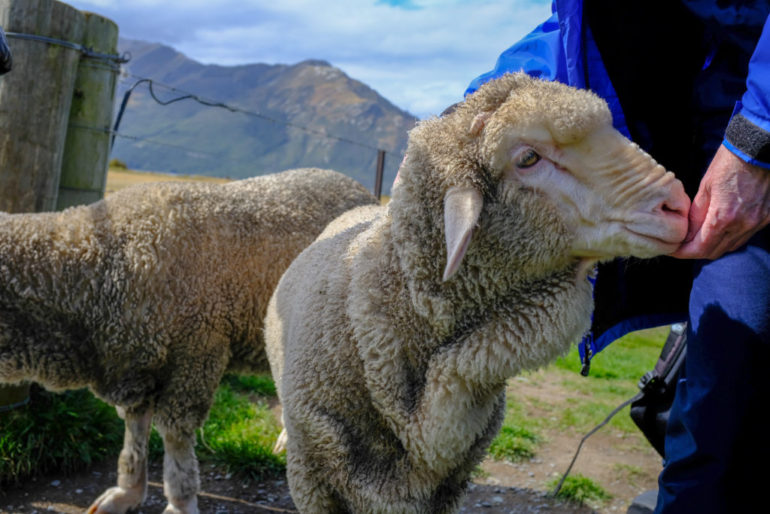Merino wool keeps you cool in the summer and warm in the winter—plus, it’s durable and odorless.
I’ve always been skeptical of “one size fits all” things: multi-colored pens, convertible clothing, those novelty food combinations like ice cream cookie sandwiches and sushirritos. If you can do everything, then you’re probably not especially good at anything.
But one thing that’s changed my mindset is merino wool: a fabric that’s smart for all seasons, keeping you cool in the summer and warm in the winter.
It’s soft and comfortable but can be machine washed, and can somehow remain odorless even after weeks of wear (some like to call it “nature’s underwear”). It can absorb up to 3 times its weight in water before feeling wet, and it can be bent over 30,000 times without getting damaged.
With the rise of brands like Allbirds and Icebreaker, merino has garnered well-deserved attention. So naturally, I wanted to learn as much as I could about it while I was in New Zealand.
We passed sheep several times on the road, and pulled over whenever possible—but to our disappointment, most weren’t merino (in fact only 5% of the sheep in New Zealand are).
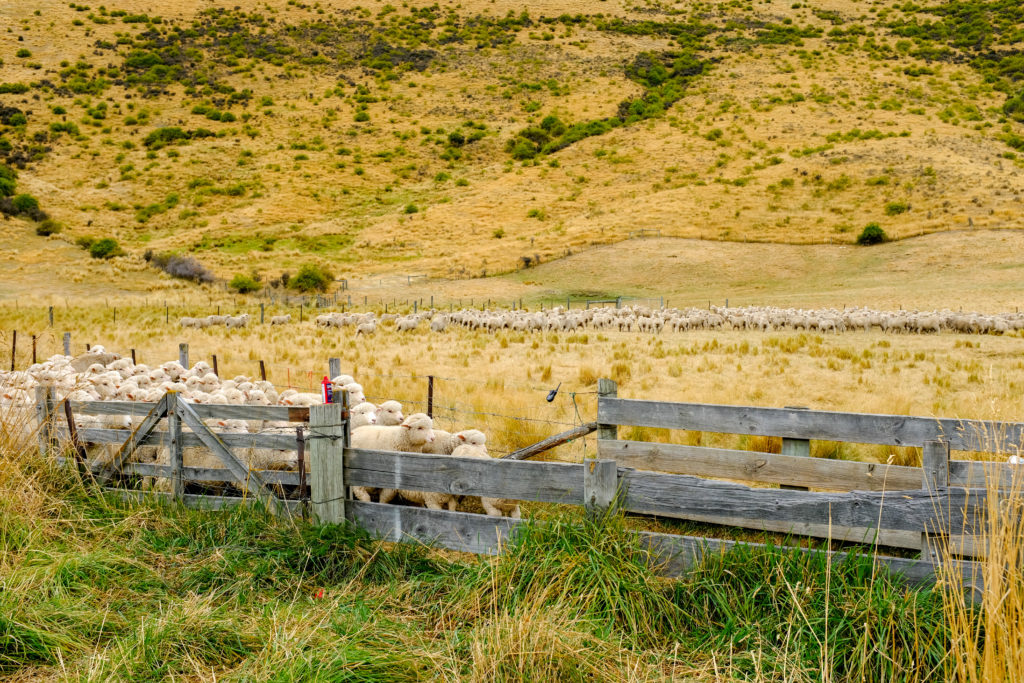
When we arrived in Queenstown, our host was amused when I told her our main priority was visiting a sheep farm.
Most visitors are drawn to Queenstown for the adventure sports—jet boat riding, parasailing, bungee jumping. To her, sheep were like squirrels in the United States: everywhere.

Still, it didn’t deter us.
We took a ferry across Lake Wakatipu to visit Mt Nicholas station, where they raise over 30,000 merino sheep and supply wool for companies like Icebreaker. (Fun fact: There are 31 million sheep in NZ, compared to just 4.4 million people).
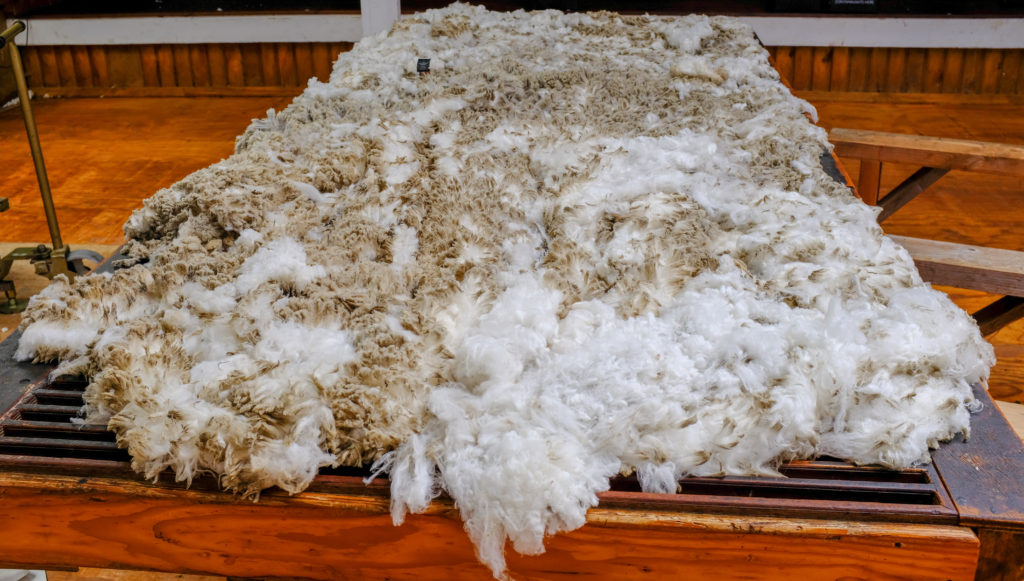
Here are the most interesting insights I learned from my day on the farm:
There is minimal waste in the process of gathering sheep’s wool.
The finest of their wool turns into base layers, socks, and even Armani suits. The thickest goes into carpets or lining.
Merino have extremely dense fleece (3x more than other breeds), and just one fleece can prepare 7 base layer tops or 40 pairs of socks.
They have lanolin oil on their wool, which helps them gather dust and blend in with vegetation (and also explains why they look so dirty), and even the oil is sold because it helps soften skin and protect from UV rays.
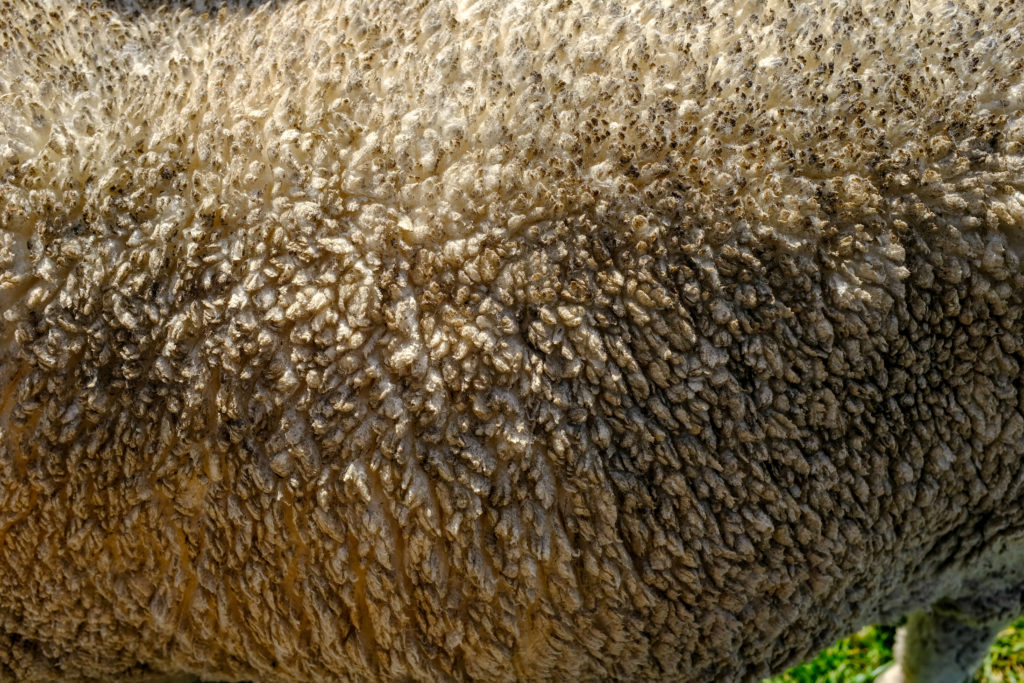
Merino sheep are categorized as wild, but they’re largely dependent on humans.
The sheep live in the mountains, thriving in the rugged environment and extreme climate. At Mt. Nicholas, they have an abundance of land and tussock grass to graze on—specifically, 2.5 acres for each sheep. They rarely have human contact, except for their annual check-ups (cleaning their hooves, making sure they’re free of infection, washing their wool) and fall shearing season.
Without people, the merino sheep can’t function. Their wool grows around 2mm per day, and if they’re not shorn annually, they can grow too heavy to even live. There’s a famous merino named Shrek, who was separated from his herd for six years and almost died because his wool got too heavy. He ended up traveling around New Zealand to raise money for charity.
Additionally, merino sheep are known for being bad mothers, and need humans to teach them how to care for their young. The ewes are shorn before their lambs are born, so they can acclimatize to the cold and empathize with how their young must feel before their wool has grown in and therefore protect them.
After 7-10 years, the sheep also gnaw their teeth down, to the point where they can’t eat anymore—humans have to put them down so they can avoid slowly starving to death.
Working dogs vary in specialty.
At Mt Nicholas, they had two types of dogs.
One was a small, silent herder, known for its precision. It could round up the sheep with just its movement and eyes. It would come close to the herd, pause while the sheep move away, then approach them again. It’s all an act of balance, and the dog can gather sheep exactly where they are intended to go, without scattering them haphazardly.
Meanwhile, another dog acts as the barker. It releases loud, brute barks to round up the sheep faster and push them down a hill more efficiently. The downside is that it lacks in accuracy.
Together, the dogs partner up for a job well done. It can take between 3-6 weeks to gather all the sheep from the mountain tops.
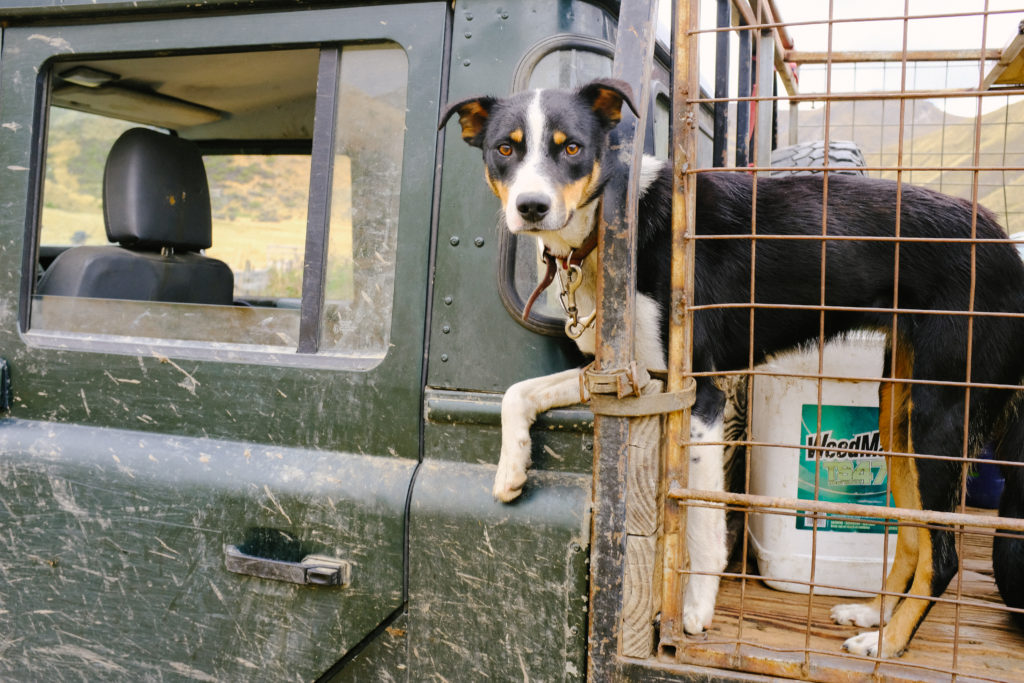
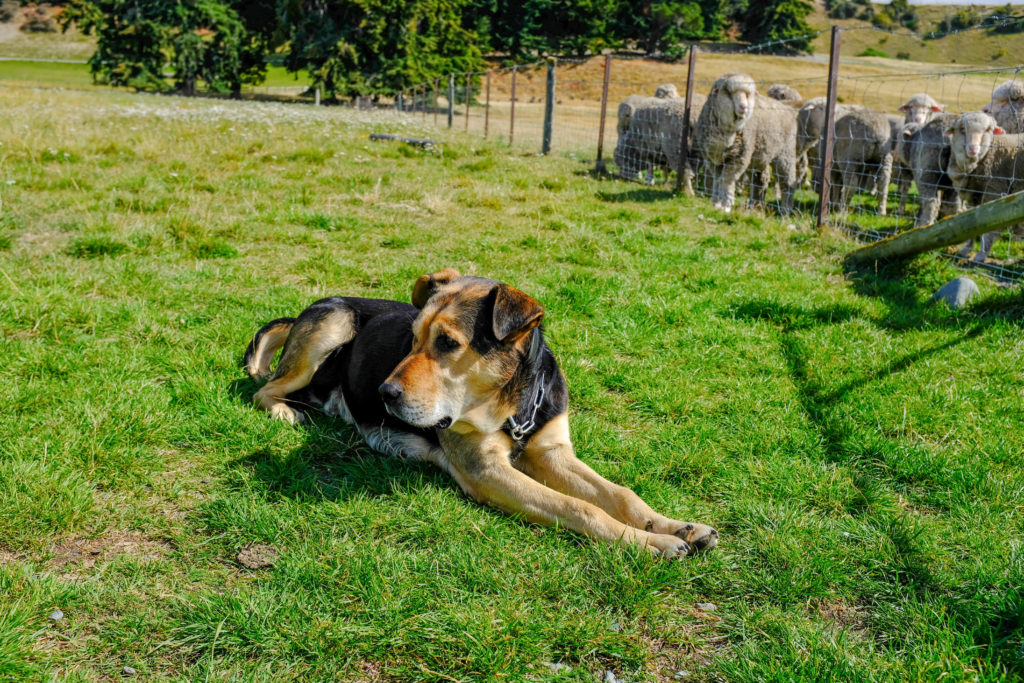
They have designated pet sheep.
The farmers at Mt. Nicholas chose two sheep as their “leader” sheep, who were most comfortable with humans. When the sheep are rounded up, these two sheep lead the flock.
They know they’re special, so they wait at the fence and naturally come up to humans. However, they also get along with other sheep and join the flocks the rest of the time.
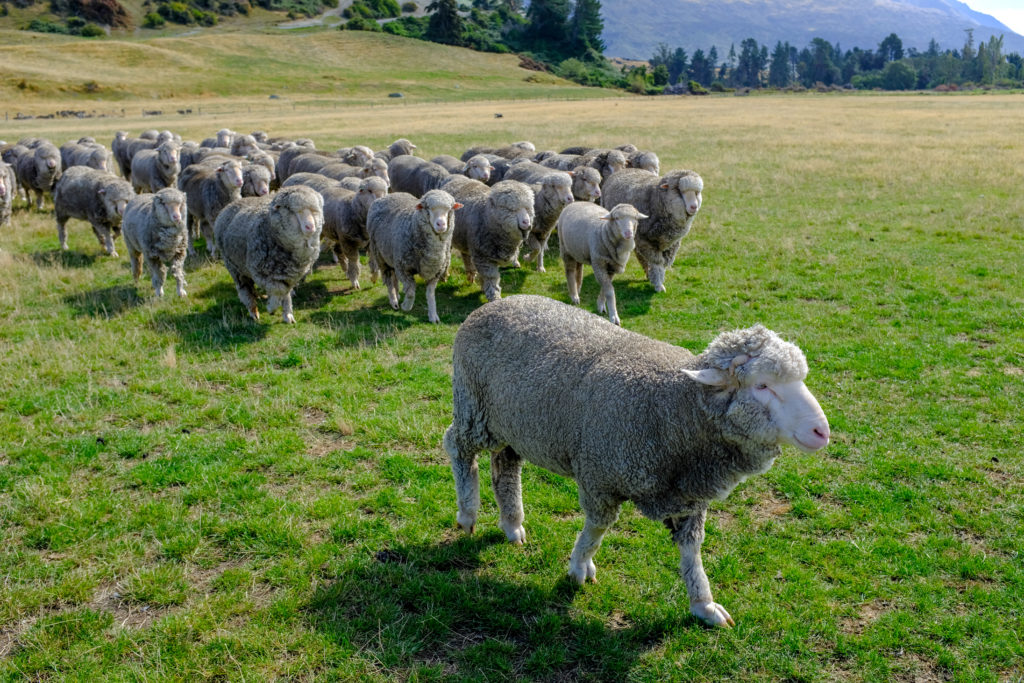
Stress makes a huge impact on quality of wool.
There were a few training sheep, used to help the dogs practice by rounding them up. They are limited in number, because when there are fewer sheep, they will stand up for themselves by stamping their feet (in other words, it’s harder to round up 5 sheep than 100, so they are perfect for training).
However, the sheep can’t be shorn because of all the stress they endure from the dogs—the wool is just too low quality. It makes me think about the impact that stress can make on humans, if stress can deteriorate sheeps’ bodies so much.
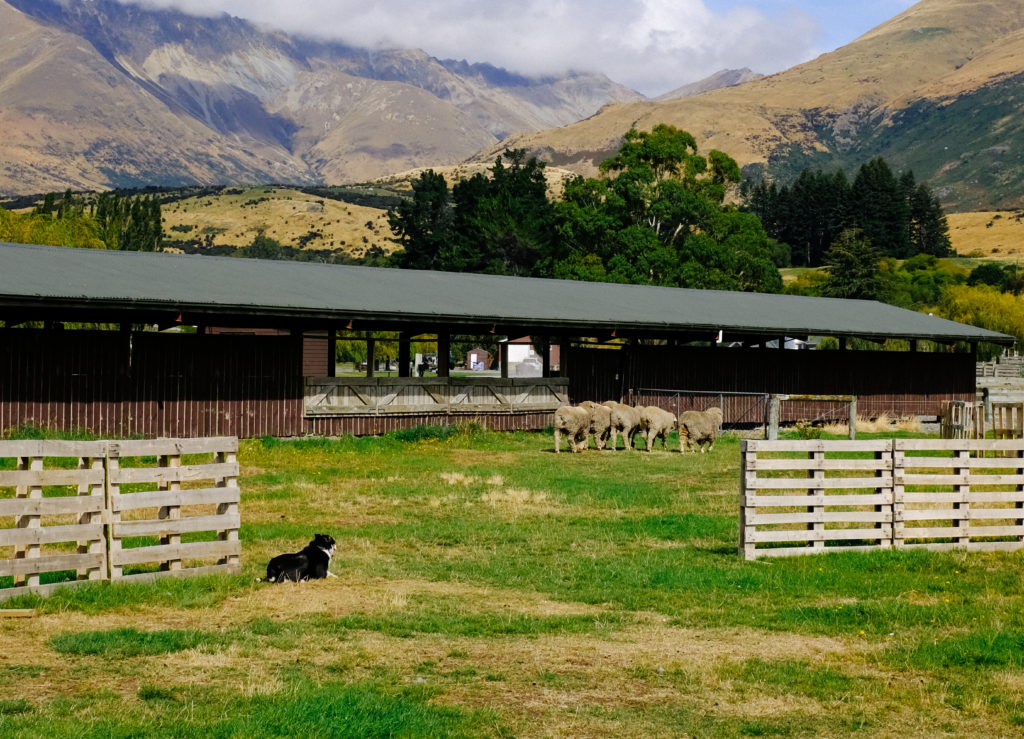
Possum merino is marketed to be similar to merino sheep, but it’s completely different.
While merino sheep are shorn for their wool, you have to kill a possum to get its fur. However, the marketers describe the fur as “possum merino” so that people will associate it with merino sheep and assume that it’s gathered in a humane fashion.
Despite the fact that possums are killed, New Zealanders encourage people to buy possum merino products (and it’s approved by World Wildlife Fund and their Department of Conservation). They want to get rid of possums, because they’re considered non-native pests that are ruining the native forest and eating the eggs of rare birds like kiwis.
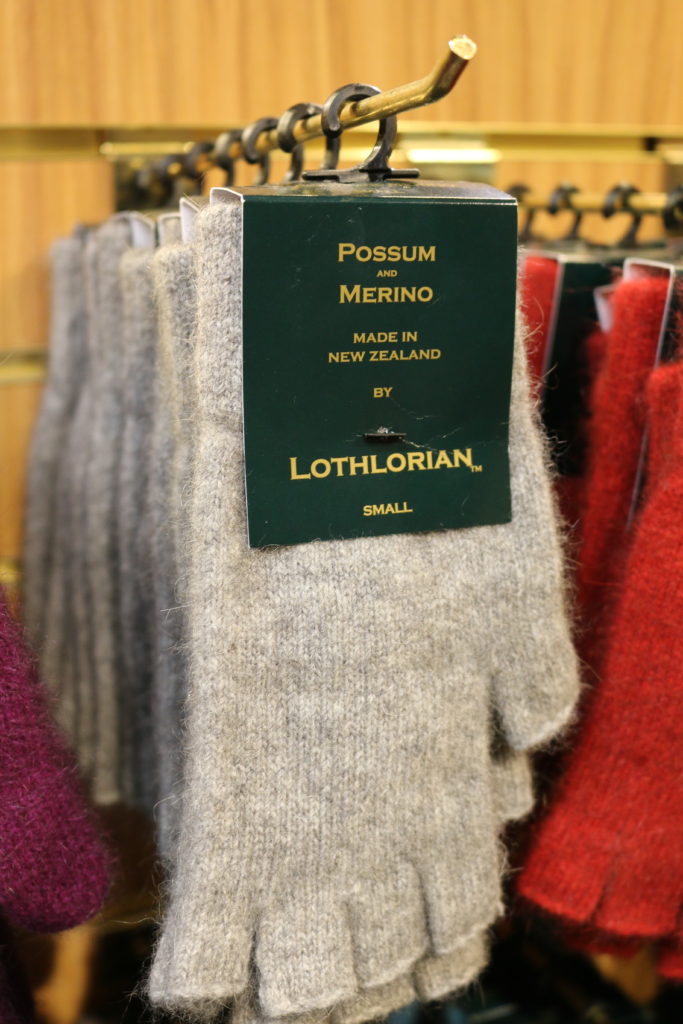
Shearing is lucrative and intense work.
Shearing usually happens in August and lasts around 6 weeks. Professional shearers work up to 9 hours a day, 30 days in a row, and they’re paid per sheep. On average, it takes about 2 minutes to shear sheep, they earn $3.40 per sheep, and they shear over 350 per day.
That’s about $1000 per day, which can sustain one financially for quite a while—but it’s a long, hard job. The shearer has to hold onto the sheep, which usually weighs around 80 kg, in a wrestling-like manner. They hold heavy scissors and have to shear its wool quickly.
Apparently, you need the fitness of a marathon runner to do the job well, and there are even world championships held to compare fitness levels.
It was such a fascinating experience to learn more about merino sheep.
In general, I find inspiration from nature pretty cool—like how Sperry Docksiders were inspired by dog paws, velcro was inspired by spurs, and adhesives were inspired by gecko feet. I’m excited to see how merino wool is applied in the future, since it’s a material that can really be adapted for so many contexts.

